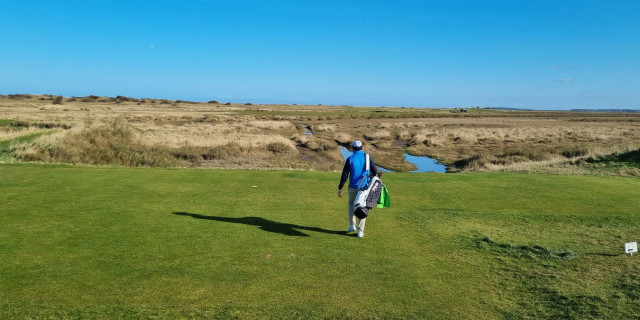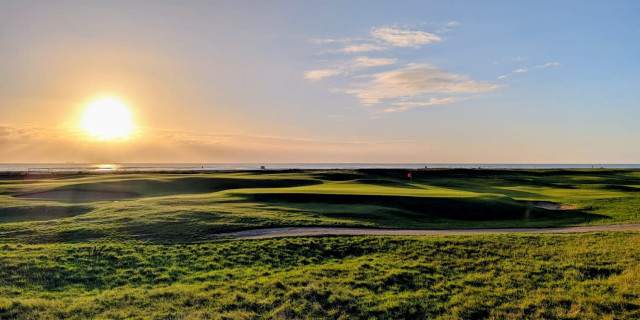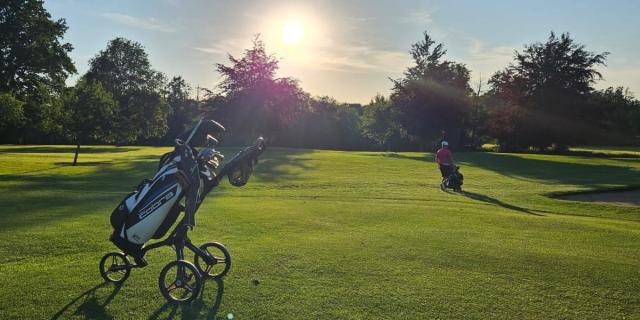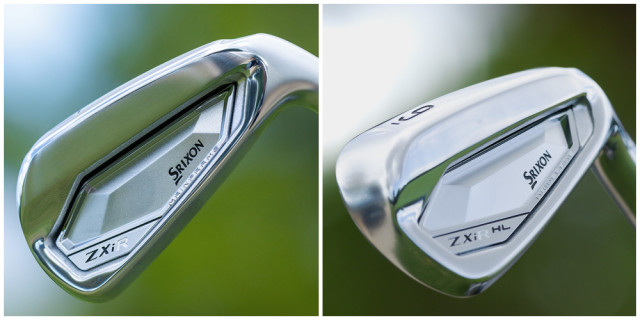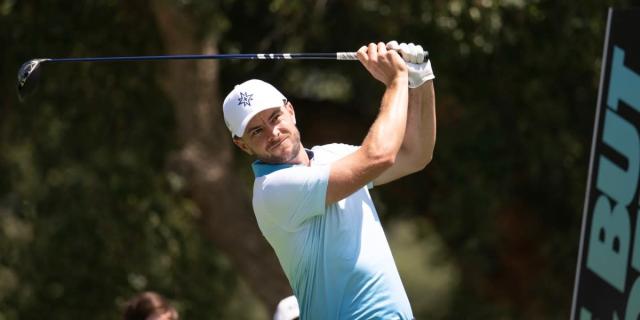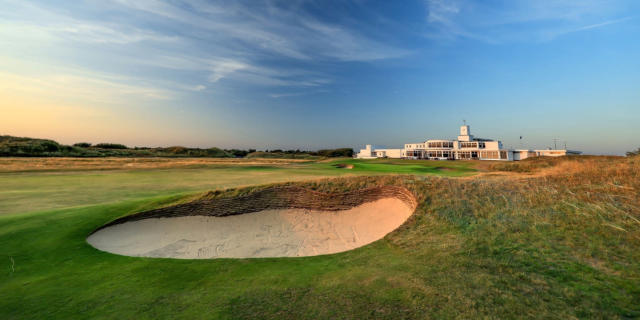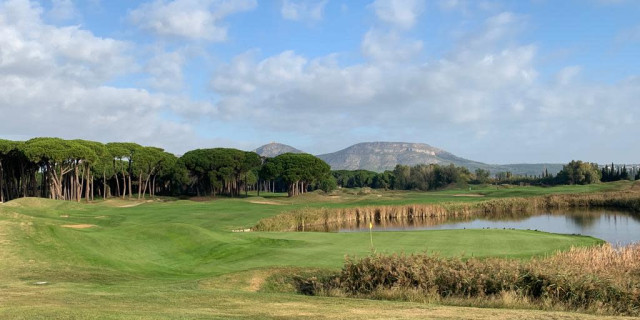
What Are Your Favourite Moments Spectating at The Open
THERE is no other golf tournament quite like The Open Championship. It has a history like no other major and is played on the finest links courses known to mankind.
The Americans will point to the US Open as being the toughest major to win, played on brutal golf courses. But here’s the thing - their courses are “tricked up”, with greens like glass and run-off areas like ski slopes.
The courses used by the R&A are utterly natural. The exception was the 1999 tournament at Carnoustie when the rough was knee-high and the conditions were brutal.
Our links courses have all stood the test of time. And the R&A are perfectly happy to see the world’s best golfers shooting low scores.
The Open has been part of my life for as long as I can remember and I have been fortunate enough to have attended many, both as a paying spectator and in my capacity as a journalist. It is a privilege to walk through the gates and watch the world’s greatest tournament unfold before my eyes.
Here are some of my favourites...
Jack Nicklaus, St Andrews, 1970
The first Open that I witnessed in the flesh was at St Andrews in 1970. As a youngster I quite clearly remember watching Doug Sanders on the final green, standing over that tiny putt to win and when he bent down to remove an imaginary piece of grass I just knew that he was going to miss. But my abiding memory of that tournament came at the 18th hole in the playoff the following day. Standing on the tee, Jack Nicklaus removed his jersey and drove the ball through the back of the green - a distance of 380 yards. After he holed the winning putt he threw his putter up in the air and as it came back to earth it very nearly decapitated Sanders.
Lee Trevino, Muirfield, 1972
The greatest display of shotmaking that I ever witnessed came not on the course but on the practice ground at Muirfield in 1972. It came from Lee Trevino. Back then players turned up with their own practice balls. Trevino’s caddie was Willie Aitchison, who arrived on the range with Trevino wearing a baseball mitt. He trudged out to a distance of about 120 yards and, as Trevino began hitting wedges, Aitchison stood in the middle of the range catching Trevino’s golf balls. The American, who would go on to win The Open that year, worked his way through the bag and, as he did so, his caddie moved back, continuing to catch the balls before they landed. Eventually Trevino moved on to a three wood and driver. I remember watching open-mouthed as Aitchison continued to move back, catching the balls after they had bounced once. Trevino went right through the golf bag, hitting everything with a huge slice. And Aitchison never once had to move more than three feet to catch the ball. It was astonishing.
Tom Watson, Turnberry, 1977
Tom Watson and Jack Nicklaus went at it hammer and tongs for four days in glorious weather at Turnberry. They made birdies for fun, producing one world-class shot after another, leaving the rest of the field trailing in their wake. They came to the final hole with Watson holding a one-stroke lead. Nicklaus found a dreadful lie with his drive and gouged it out, finding the front of the putting surface. Watson hit another glorious approach to three feet. Somehow, it was inevitable that Nicklaus would hole his putt and he brought the house down by doing precisely that. With cheers still ringing around the 18th green, Watson made his own birdie to finish on 268, beating the Golden Bear by a shot. Hubert Green finished third - 10 shots behind Nicklaus.
Seve Ballesteros, St Andrews, 1984
With Tom Watson having an argument with the wall at the back of the 17th green, Save Ballesteros was on the final green in two with a breaking 12-foot putt. He knew that he needed to hole it to ensure he would pick up the Claret Jug. It wasn’t so much watching Seve hole the putt (I knew he was going to) as the iconic and joyous celebration that followed when the ball dropped into the hole. If ever there was a moment when you wanted to say “I was there”, this is it. And I was.
John Daly, St Andrews, 1995
I was standing beside the 18th green on the final day when Italy’s Costantino Rocca approached his ball, knowing that he needed a birdie to force a playoff with John Daly. Rocca then proceeded to duff his chip in a manner that would have embarrassed even an 18-handicapper. His chance had gone. But what happened next defied belief. Rocca reached for his putter and sent the ball off on its rollercoaster journey down and through the Valley of Sin and up towards the hole. When it was about six feet from the cup I just knew that it was going to drop. And the when it did so the roar was deafening. Rocca fell to the ground, beating the turf. Sadly, that was as good as it good. He had nothing left when it came to the playoff. But it was a moment that everybody who witnessed it will remember for the rest of their lives.
Paul Lawrie, Carnoustie, 1999
For gut-wrenching drama, nothing comes close to Carnoustie in 1999. Scotland’s Paul Lawrie began the final day 10 shots behind 54-hole leader Jean Van de Velde. On a tough day on a brutal golf course, Lawrie fired a magnificent round of 67. But it didn’t look like it was going to be anywhere good enough. And then Van de Velde began to fritter shots away. He came to the final hole requiring a double-bogey six to lift the Claret Jug. He took seven blows after hacking his way all over the 18th, even removing his shoes and socks to consider the possibility of playing from the burn. What I most remember about that day was Lawrie’s fabulous approach to the 18th green in the playoff. It was a magnificent golf shot that never left the flag from the moment he struck it. Poor Van de Velde tried to tell us that it was only a round of golf and that nobody had died, but there cannot be a single day that passes that he doesn’t think about about his final-hole meltdown.
Tiger Woods, Muirfield, 2002
Woods has achieved many great things at The Open but I want to take you back to the third round at Muirfield in 2002. My abiding memory is of Woods making his only birdie of the day in brutal conditions, raising his arms in triumph, bending over at the waist and sweeping his arms in a theatrical bow before exchanging high five with his playing partner and close friend, Mark O’Meara. Moments later he parred the 18th and signed for a score of 81, the worst of his professional career. He later said: “Those were the hardest conditions I have ever played in, We were not prepared for that weather. Nobody was.” Woods had endured howling winds and pouring rain on a day when 10 players failed to break 80. The following day he bounced back with a 65, but the damage had already been done.
Tiger Woods, Hoylake, 2006
This was a Woods masterclass. He only used his driver once during the course of the tournament having decided that the key to winning was to keep the ball in play. So he played lots of irons from the tee and showed the world’s best players how to do it. After holing the winning putt, Woods buried his head in the shoulder of caddie Steve Williams and sobbed uncontrollably, having won his first major since the passing of his father Earl Woods two months earlier. On the way to victory, Woods hit 86% of fairways and became the first man since Tom Watson in 1982-83 to successfully defend the Claret Jug.
Tom Watson Turnberry, 2009
Tom Watson returned to the scene of his 1977 triumph, this time aged 59. I followed him for all four rounds as he mounted the most unexpected and unlikely of challenges. He came to the 72nd hole needing a par to win and become the oldest major champion in history. He struck a magnificent shot to the heart of the green but it failed to stop and rolled through the back. I looked on in horror as Watson took three more to get down, finishing tied with fellow American Stewart Cink. I remember the sinking feeling in the pit of my stomach as I just knew that Watson had nothing left in the tank and would duly go on to lose to Cink in the playoff. It was heartbreaking.
Darren Clarke, Royal St George’s, 2011
The Northern Irishman had contended several times and had been written off as a genuine contender to finally land his first major but he knew that when he arrived on the Kent coast in 2011 that his game felt in good shape. He opened with a pair of 68s and shared the 36-hole lead. A third-round 69 saw him go into the final round with one-shot lead over Dustin Johnson. And he was five ahead of Phil Mickelson. As Clarke made steady progress on the final day, with your correspondent following his every shot, roars began to ring out as Mickelson started making birdies for fun. When he eagled the seventh, he was tied for the lead. If Clarke was concerned he never once showed it. Playing in his 20th Open, the 42-year-old had established a four-shot lead with four holes to play and could even afford to finish with a couple of dropped shots. There wasn’t a dry eye in the house, yours truly included.
Henrik Stenson, Royal Troon, 2016
Watching Stenson and Phil Mickelson trading blows in the final round was reminiscent of Watson and Nicklaus at Turnberry in 1977. That Sunday afternoon will live with me forever. Just when you think you have seen everything this game has to offer it has a habit of proving that you haven’t. Stenson led Mickelson by a single shot after 54 holes. Lefty would shoot a final round of 65 - had you offered him that score before a blow had been struck in anger he would have bitten your hand off. The problem was that Stenson shot a 63 to record a scarcely credible 72 hole total of 264, 20 under par, finishing the job with a magnificent birdie putt on the 18th.
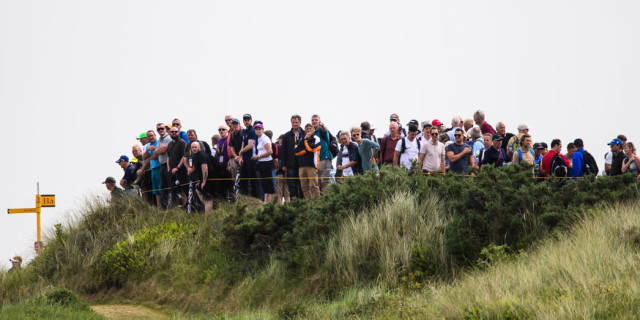
(Image Credit: Kevin Diss Photography)
Jordan Spieth, Royal Birkdale, 2017
When people talk about Jordan Spieth’s victory in The Open at Royal Birkdale in 2017 they tend to focus on his recovery shot after a wild drive at the 13th. It helped him to get away with a bogey on a hole when he should have been running up a cricket score. But, for me, the shot of the tournament, and one of the best I have ever witnessed in the flash, came at the next hole, the par-three 14th. His brain must have been frazzled after taking the best part of 30 minutes to play the previous hole and let Matt Kuchar back into the hunt. But he struck a glorious shot and nearly had a hole in one. The birdie got him back on track. And he would also hole a huge eagle putt on the 15th and another for a birdie on the 16th as he won by three shots.
Shane Lowry, Royal Portrush, 2019
The Open was back at Royal Portrush after a 68-year absence with much of the focus on Rory McIlroy ahead of the tournament. McIlroy missed the cut after opening with an horrific eight. But Shane Lowry emerged as the main home hope with a course-record 63 taking him four clear after the third round. There were plenty of celebrations on Saturday evening, but these did not prove to be premature as Lowry rode a tidal wave of support in the final round to wrap up a six-shot victory over Tommy Fleetwood. Lowry collected the Claret Jug amid emotional scenes in front of the packed grandstands around the 18th green with chants of 'ole, ole, ole' ringing out across the course.
Related Content
Why The Open is Golf's Best Major
About the author

Derek Clements is a seasoned sports journalist and regular Golfshake contributor, specialising in tour coverage, opinion pieces, and feature writing. With a long career in national newspapers and golf media, he has reported on the game across Europe, the United States and Australia. A passionate golfer, he has played and reviewed numerous renowned courses, with personal favourites including Pebble Beach, Kingsbarns, Aldeburgh, Old Thorns and the K Club. His love of the game informs his thoughtful commentary on both professional golf and the wider golfing community.

The oldest & most prestigious major, a trip to The Open is a must for every golf fan. From tickets and transfers to hospitality & golf, Golfbreaks.com can build the perfect package to help you experience The Open in style.
Tags: The Open Championship The Open Royal Liverpool


